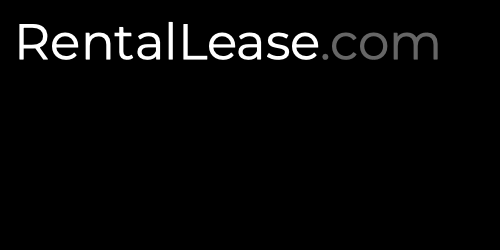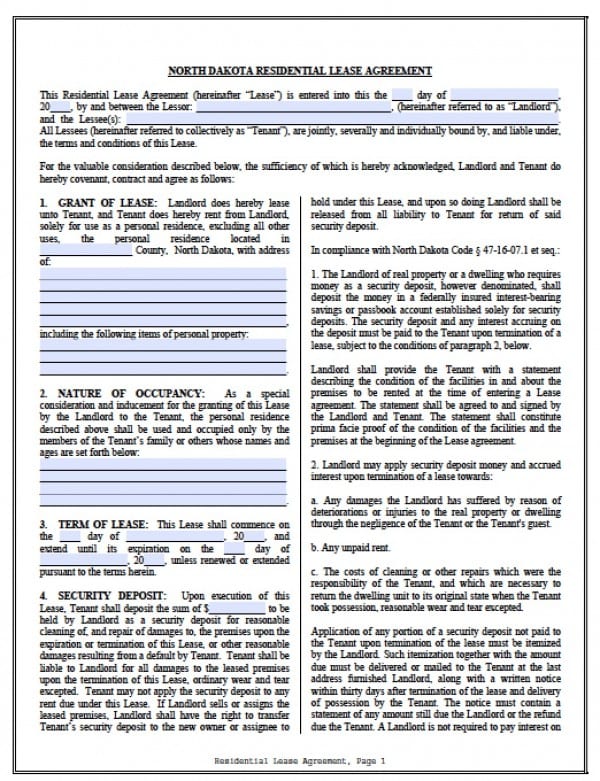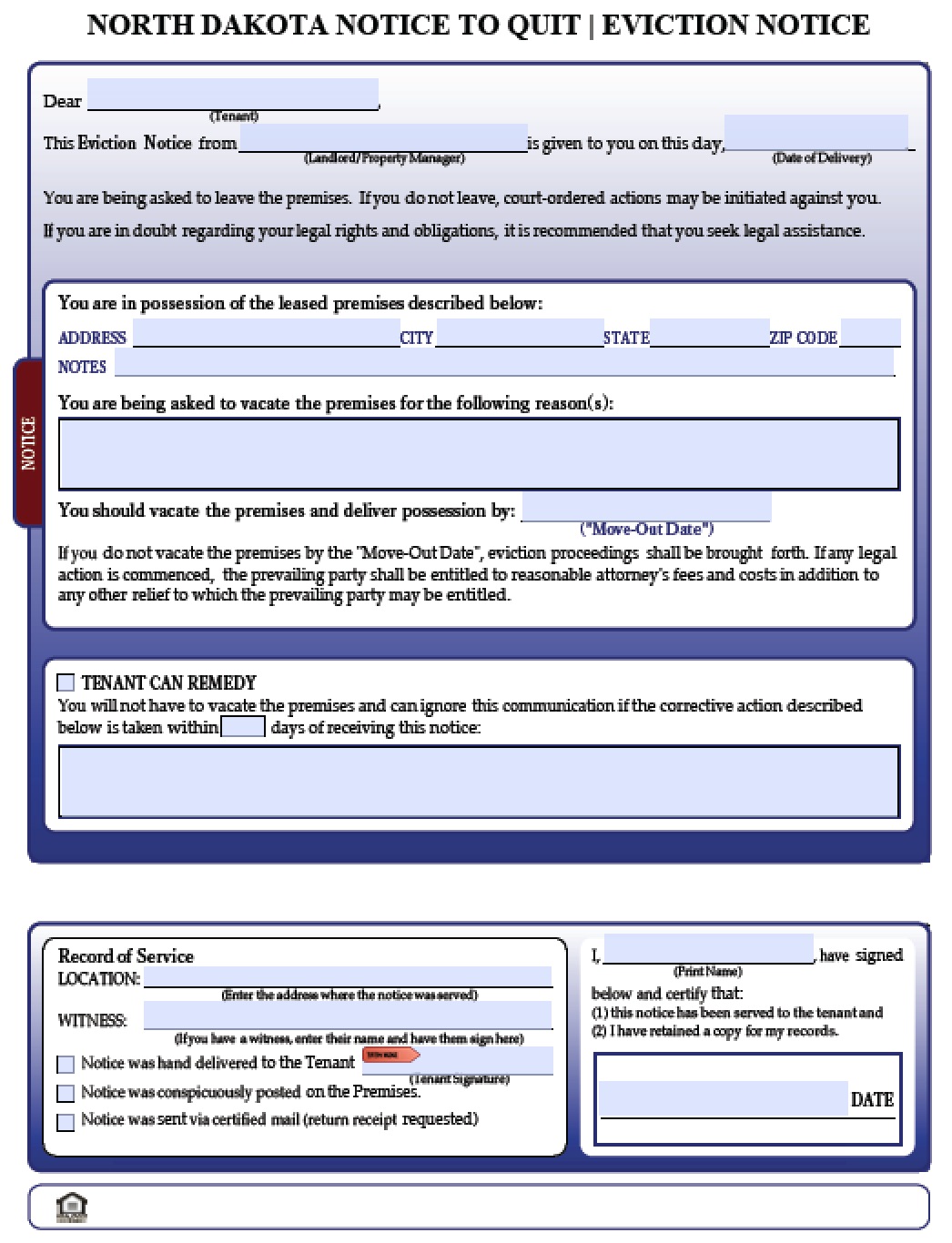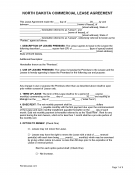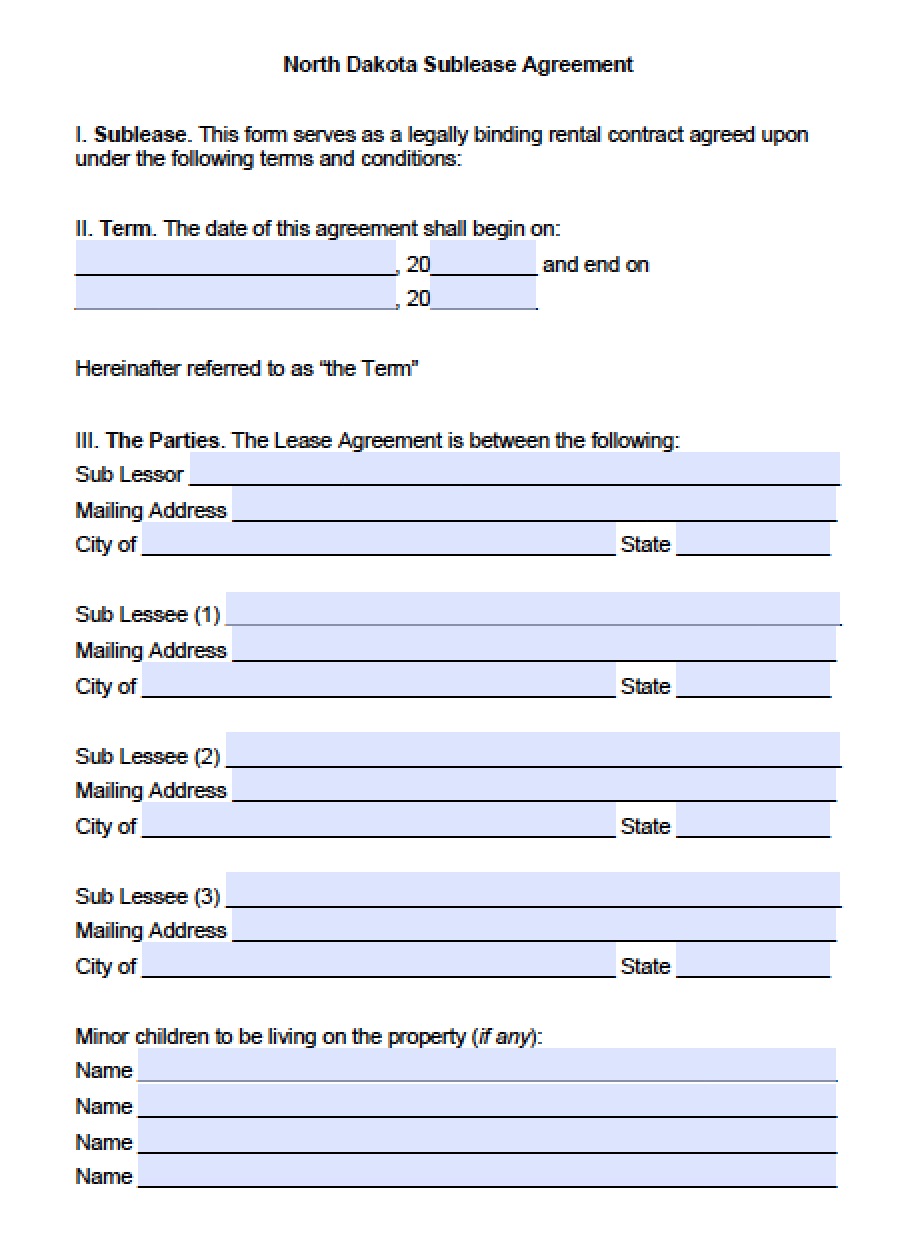The North Dakota rental agreements are written specifically for the leasing of residential and commercial property in the State. A rental contract is employed when a tenant views a property owned by a landlord and agrees to rent it for the duration of the term stated in the agreement. Generally speaking, it is recommended that the property owner/manager check the applicant’s credit and background (including any references) with the rental application. If the landlord opts to screen his/her tenants, a lease will be drafted and signed only if the landlord approves of the tenant’s credentials. Access to all facets of the property should be given to the tenant immediately after this point.
North Dakota Rental Lease Agreement Templates | PDF
North Dakota Lease Agreements
The North Dakota standard residential lease agreement is a rental contract between a landlord and a tenant that lasts one (1) year, although the term can be any fixed time period. The tenant’s main responsibility is to pay the landlord the monthly amount detailed in the agreement (typically on the first of every month) while the landlord’s duty is to ensure the rental space remains in a livable condition. All potential lessees should fill out a rental application to verify…
The North Dakota eviction notice for the nonpayment of rent is a form served upon a tenant who is currently behind on their rent payments. The document gives the tenant three (3) days to either pay the landlord or leave the property. If the tenant does not leave the premises after the expiration of the notice period, they will be subjected to a formal eviction if so desired by the landlord. The landlord may also seek compensation from the tenant…
The North Dakota rental application is a verification form used by property owners and managers to collect data from a potential tenant to help them decide whether the applicant would serve as a responsible tenant. The information collected by the landlord will include the applicant’s Social Security number (SSN), driver’s license number, monthly income, previous addresses, and references such as employers and previous landlords. If the landlord desires, they may charge a non-refundable fee for conducting this search. Once the…
A North Dakota commercial lease agreement may be used for any business seeking to lease property from a landlord. The standard types of rental space include retail, office, industrial, and restaurant use. It is advisable that the landlord request the completion of a rental application by the principal(s) of the entity to ensure that they are able to pay the rent. The landlord should also view the entity’s information by searching the Secretary of State business database.
The North Dakota month-to-month lease agreement is a rental contract for a tenant who wants to lease property with a condition that they, or the landlord, may cancel the agreement with at least thirty (30) days’ notice. If the landlord gives notice to change any part of the terms and conditions, the tenant may terminate the lease within twenty-five (25) days (§ 47-16-15(3)). The landlord should understand that they will have to follow the same process for evicting a monthly…
The North Dakota sublease agreement is a special type of contract that enables a lease-holding tenant to collect rent from a subtenant and allow them to occupy the same rental space. The landlord will generally need to be notified of this arrangement since most master leases prohibit subletting without their written consent. Every sublessor should read their lease carefully and look for the section titled “SUBLETTING” to learn the rules applied to the rental property. Depending on the situation, the…
STATE DISCLOSURES
Lead-Based Paint – If any housing unit was constructed before 1978, the landlord will need to furnish this document to the tenant to inform them of hazardous paint which may be contained on the premises.
Move-in Checklist (§ 47-16-07.2) – The landlord must give this form to the tenant to state the current condition of the property upon moving in. The tenant should review the property to ensure that it has been properly maintained.
SECURITY DEPOSITS
Maximum (§ 47-16-07.1) – The landlord may not charge more than one (1) month’s rent.
Pet Deposit (§ 47-16-07.1) – If the tenant has an animal, the landlord may charge an additional month’s rent not to exceed two thousand five hundred dollars ($2,500).
Returning – Upon thirty (30) days after the tenant has vacated the property, the landlord must give back all funds including any itemized deductions.
LANDLORD'S ACCESS/ENTRY
According to State law (§ 47-16-07.3), the landlord must give the tenant sufficient notice before entering the property for any non-emergency issue. There is no specific time-frame given, but the general rule of thumb is between twenty-four (24) and forty-eight (48) hours.
